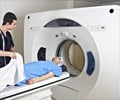A novel MRI method that detects low levels of zinc ion can help distinguish healthy prostate tissue from cancer, revealed UT Southwestern Medical Center radiologists.

‘A novel MRI method that detects low levels of zinc ion can help distinguish healthy prostate tissue from cancer.’





A novel MRI method that detects low levels of zinc ion can help distinguish healthy prostate tissue from cancer, revealed UT Southwestern Medical Center radiologists. Typical MRIs don't reliably distinguish between zinc levels in healthy, malignant, and benign hyperplastic prostate tissue, so discovery of the technique could eventually prove useful as a biomarker to track the progression of prostate cancer, suggested researchers with the Advanced Imaging Research Center, part of UT Southwestern's Harold C. Simmons Comprehensive Cancer Center.
"This research provides the basis for differentiating healthy prostate from prostate cancer by use of a novel Zn(II) ion sensing molecule and MRI," said senior author Dr. A. Dean Sherry, Director of the Advanced Imaging Research Center and Professor of Radiology at UT Southwestern.
The findings appear in the Proceedings of the National Academy of Sciences.
"The potential for translating this method to human clinical imaging is very good, and will be useful for diagnostic purposes. The method may prove useful for monitoring therapies used to treat prostate cancer," said Dr. Sherry, who is also Professor of Chemistry at UT Dallas, where he holds the Cecil and Ida Green Distinguished Chair in Systems Biology.
Advertisement
Researchers with the Advanced Imaging Research Center are world leaders in developing new MRI tracers, which are non-radioactive, and techniques to reveal the aberrant machinery of cancer, diabetes, obesity, Alzheimer's disease, schizophrenia, depression, and diseases of the heart, lung, and liver. As part of UT Southwestern's Peter O'Donnell Jr. Brain Institute, the scientists are also mapping the brain in unprecedented detail, offering researchers new understanding of the normal brain and abnormal brain as found in subjects with autism and attention deficit hyperactivity disorder (ADHD).
Advertisement
Source-Eurekalert

![Prostate Specific Antigen [PSA] & Prostate Cancer Diagnosis Prostate Specific Antigen [PSA] & Prostate Cancer Diagnosis](https://images.medindia.net/patientinfo/120_100/prostate-specific-antigen.jpg)













